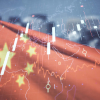Insights
Asian financials: beyond the drama
Asian banks will be more insulated from the current global banking turmoil, in our view, thanks to smaller-scale rate hikes in Asia, prudent supervision by regional financial regulators, outsized capital adequacy ratios and sensible security exposure relative to total assets. We believe this will bode well for the sector in the longer term and enhance its attractiveness.
Net zero made in Asia
We believe that there are substantial rewards for those who are capable of driving the push for global decarbonisation. So, the question is: who is building the kit for the world’s net zero ambitions? We believe that the answer, both now and well into the future, is Asia.
Navigating Japan Equities: Monthly Insights from Tokyo (March 2023)
This month we discuss what the market may initially seek the most from the next Bank of Japan governor; we also look at Japan’s expanding outlays, with tax revenue and inflation in focus.
Thoughts on the 2023 China National People’s Congress
The official GDP growth target of “around 5%” unveiled at China’s annual National People’s Congress was lower than many external forecasts, and fiscal policy looks less accommodative relative to both market expectations and that of 2022. In our view, these conservative targets leave room for outperformance and likely reflect cautiousness over unexpected events and reluctance in overstimulating the economy.
Today’s surgical robot, tomorrow’s robot surgeon
Considered to be one of the greatest modern-day medical breakthroughs, robotic surgery is revolutionising surgical practices around the world. The breakthrough is particularly prominent in China, which could be the next growth frontier for surgical robotic companies.
The just-released 4Q CY22 data on aggregate corporate profits in Japan was somewhat mixed, as the overall corporate recurring pre-tax profit margin fell from its record high on a four quarter average. The non-financial service sector ticked up, but the manufacturing sector fell from its record high.
Thoughts on the BOJ you might not have heard, but should consider
Currently, there is a wide variety of predictions for the BOJ’s actions, with some expecting imminent hawkish decisions based upon some of Governor-nominee Kazuo Ueda’s “anti-distortion” comments, but changes are more likely to be gradual and tentative assuming the global economy continues improving.
Global Equity Quarterly (Q4 2022)
Current equity market conditions dictate that you choose your investment attire particularly carefully. In our view, buying profitless technology companies is like going up a Scottish mountain wearing flip-flops. You might get away with it, but the odds are not in your favour. Instead, we prefer the protection afforded by profits (and cash) generated today—not at some unspecified point in the future.
Balancing Act-Monthly insights: Multi-Asset Team-February 2023
Growth prospects look to be improving—a sharp shift from late 2022 when the markets had strong conviction that a first half slowdown was to be followed by a better second half.
On the Ground in Asia-Monthly Insights: Asian Fixed Income-January 2023
We maintain the view that global inflationary pressures may moderate further. We prefer Singapore, South Korea and Indonesia bonds. As for currencies, we favour the renminbi, the Singapore dollar and the Thai baht.
Harvesting Growth, Harnessing Change - Monthly Insights: Asian Equity-January 2023
Asian equities made a strong start to 2023, with the MSCI AC Asia ex Japan Index returning 8.2% in US dollar (USD) terms in January, supported by a rebound in investor sentiment towards China.
Navigating Japan Equities: Monthly Insights from Tokyo (February 2023)
This month we assess the trends in wages and salaries with significant change potentially in progress; we also discuss how changes at the BOJ may affect the market.
Japan Value Insights: CDMOs and health-related social needs
Contract development and manufacturing organisations (CDMOs) could play an important role in addressing health-related needs as society seeks rapid solutions to issues such as an increase in refractory diseases.
Balancing Act-Monthly insights: Multi-Asset Team-January 2023
In our view, the change from dollar strength to relative weakness is meaningful for the shift in relative growth prospects, favouring the rest of the world over the US.
Consumption potential in China’s lower-tier cities
While consumer sentiment may be weaker across China presently, we believe that the long-term outlook for the country’s consumer sector remains attractive. China’s lower-tier cities are stepping up to fuel the growth engine that once relied heavily on megacities.
Future Quality Insights -January 2023- The path to clean, secure and affordable energy
Clean, secure and affordable energy is likely to be one of the major challenges of this decade. Given we need abundant energy to complete the energy transition, we believe fossil fuel companies that are actively enabling transition to low carbon society can be part of the solution. They often understand how to deliver global energy at scale and have the balance sheets capable of enabling the transition to clean energy.
Harvesting Growth, Harnessing Change - Monthly Insights: Asian Equity-December 2022
Chinese shares outperformed in December as the country continued to move away from its zero-COVID policy while markets in Taiwan and South Korea slumped amid concerns towards the global economy. In ASEAN, Thailand led the region as the country is expected to be one of the biggest beneficiaries of a potential return of Chinese tourists.
On the Ground in Asia-Monthly Insights: Asian Fixed Income-December 2022
We expect global inflation to ease and global growth to weaken in 2023; we also think that the Fed is likely to pause hiking rates by the first quarter of 2023. Against this backdrop, we are broadly constructive on regional bonds as most Asian central banks could be nearing the end of their rate hike cycles.
Navigating Japan Equities: Monthly Insights from Tokyo (January 2023)
We discuss the Bank of Japan’s unexpected move to tweak its yield curve control scheme and the potential implications; we also provide a brief overview of some of the factors seen impacting Japan equities in 2023.
Harvesting Growth, Harnessing Change - Monthly Insights: Asian Equity-November 2022
Asian stocks rebounded strongly in November after Federal Reserve Fed Chair Jerome Powell pointed to slower pace of monetary policy tightening and lifted market sentiment. All Asian markets ended in positive territory, with China in the lead with a month-on-month (MoM) gain of 29.7%.
Balancing Act-Monthly insights: Multi-Asset Team-December 2022
While we do not expect the US Federal Reserve to pivot any time soon towards easing policy, the firm break in dollar momentum perhaps reflects a shift in the relative growth story which had favoured the US towards one focused on the rest of the world centred around improving China demand.
Global Investment Committee’s Outlook
We don’t expect smooth sailing for the global economy and markets, but there should be great relief for both stocks and bonds in 2023, with pockets of strong outperformance due to idiosyncratic advantages. Notably, Europe and Developed Pacific-ex Japan should be overweighed for equites for the next six months, but Japan should perform the best by next December.
On the Ground in Asia-Monthly Insights: Asian Fixed Income-November 2022
We are more positive on duration overall, on the assessment that we are likely past peak hawkishness from the Federal Reserve and other developed market central banks. We favour Singapore and South Korean government bonds, given their relatively higher sensitivity to stabilising US Treasury yields.
BOJ’s YCC shift parallels a Fed pattern
In what was probably the best kept secret of many years, the BOJ unanimously agreed to shift its YCC policy well before virtually any economist or market watcher expected. The largest question people seem to have is “why now?”. As with most major decisions, the answer was likely a confluence of several important items.
2023 Global macro outlook: Ten predictions
No single catch-phrase epitomises the 2023 global macro outlook, but here are ten predictions for the year ahead.
2023 Global multi-asset outlook
On balance, we are constructive mainly for valuation support and growth prospects improving for China with a firm tailwind from an easing dollar. Pockets of the US equity market may struggle on weaker earnings, but the rest of the world should still fair relatively well provided the US does not enter a deep recession.
2023 Global equity outlook
Some of the factors that have shaped 2022 look less likely to recur in 2023 (for instance, supply chain duress because of COVID containment) but others will likely last longer (most notably a higher cost of capital). We are cautiously optimistic that less aggressive monetary policy will eventually make 2023 a kinder year for equity markets but there may yet be shocks to overcome.
2023 Singapore equity outlook
We expect a moderation of growth, a peak in inflation and a more accommodative monetary policy in 2023. We see this as a positive for Singapore, as we believe a more accommodative policy backdrop will help support continued expansion in corporate earnings growth in 2023.
2023 China equity outlook
We believe that the rewards will outweigh the risks related to China amid an existence of enough cyclical, thematic and structural trends that could enable the country to outperform in 2023; particular focus will be on the government’s zero-COVID policy and its support for the property sector.
2023 Global Fixed Income outlook
We present our 2023 outlook for core markets, emerging markets and global credit.
2023 Asian rates and FX outlook
Most Asian countries are expected to grow at a slower pace in 2023 than they did in 2022, and fiscal stimulus will no longer be a dominant factor driving growth in the region. We expect monetary policy outlook to persist as the primary driver of rates in 2023 with focus on the potential end to the tightening cycle.
2023 Asian equity outlook
As we look towards 2023, it is easy to be overwhelmed by the broader permutations of possible outcomes. But things don’t appear so dire in Asia. Inflation, which is effectively a value transfer from net consumers to net producers, may continue to benefit India and pockets of ASEAN due to favourable demographics and rising productivity.
2023 Asian credit outlook
We believe that the benign macro backdrop should remain supportive for credit fundamentals in 2023. The fiscal deficits of Asian economies are expected to gradually narrow as the need for pandemic support decreases.
Navigating Japan Equities: Monthly Insights from Tokyo (December 2022)
This month we discuss the prospects of Japanese equities remaining well-supported into 2023 thanks to robust exports and inbound demand. We also explain why the markets are looking beyond a dip in Japan’s 3Q GDP, focusing instead on the prospect of growth resuming.
2023 Japan equity outlook
As geopolitical risks and globalisation are reassessed in the wake of the COVID-19 pandemic and war in Europe, we believe that Japan stands to benefit as more companies refocus on their home markets.
Japan’s “show me the money” corporate governance: 3Q, another record high
The just-released 3Q CY22 data on aggregate corporate profits in Japan was very positive, with the overall corporate recurring pre-tax profit margin hitting a record high on a four quarter average.
China’s bond market is exhibiting low correlation to other asset classes, displaying historically lower volatility, enjoying continued internationalisation of the renminbi and benefitting from the country being included in globally recognised indices.
Balancing Act-Monthly insights: Multi-Asset Team-November 2022
This month, Fed Chair Powell seemed hellbent on quashing any last hope of a pivot or at least slowing the pace of rate hikes sometime soon. But this crushing blow to hope helped sow the seeds of an eyewatering rally when one inflation print showed some promise—hence, the manic cycle continues.
Harvesting Growth, Harnessing Change - Monthly Insights: Asian Equity-October 2022
The ASEAN region fared better on the whole in October thanks to gains by the Philippines and Malaysia; Hong Kong and Taiwan stocks were volatile while the China market continued sliding.
Navigating Japan Equities: Monthly Insights from Tokyo (November 2022)
We discuss Japan’s recent currency market interventions from an equity market perspective; we also share our thoughts on steadily rising inflation after a surge in the September core CPI.
Why convexity matters
Yields have moved significantly this year, challenging the assumption that the relationship between a bond’s price and yield is linear. We discuss convexity, which measures how sensitive a bond’s duration is to yield changes, and its importance under the current conditions.
Inbound tourism: An immediate boost for Japan
As Japanese Prime Minister Fumio Kishida focuses on various economic initiatives to shore up his support ratings, the revival of inbound tourism is seen as a measure that can provide the economy with an immediate boost.
The potential implications of China’s 20th Party Congress
China’s 20th Party Congress ended on 23 October with President Xi Jinping winning an unprecedented third term as expected. We provide a brief analysis of the Congress and the impact it could have on China’s zero-COVID policy and the capital markets.
Global Unconstrained Bond Fund Q4 2022 Outlook
We present our Q4 2022 outlook for the Global Unconstrained Bond Strategy which incorporates our core markets, emerging markets and global credit views.
The future looks bright for Asia’s equity markets
Asia continues to offer opportunities in terms of attractive companies; on a relative basis, Asian markets look set to outperform as the region becomes an even more important part of the global economy.
Global Equity Quarterly (Q3 2022)
The low for this bear market could be a lot closer at hand now than it was, with equity valuations having fallen considerably. We remain focused upon assessing our companies’ ability to deliver earnings expectations and cash generation. These give us confidence in the long-term, even if shorter-term developments remain volatile.
On the Ground in Asia-Monthly Insights: Asian Fixed Income-September 2022
Going forward, despite some expected moderation amidst the slowdown in global growth, we believe that growth and corporate credit fundamentals will remain sufficiently robust to prevent a meaningful widening of credit spreads. However, some modest widening may be expected in the near term, with the benchmark spread level at the tighter end of the expected medium-term range and given the plethora of global market risks.
Balancing Act-Monthly insights: Multi-Asset Team-October 2022
Central bank tightening is beginning to have an impact, but less evidently in terms of easing inflationary pressures than in causing strains on the global financial system. Policymakers are beginning to blink—first with Japan intervening to support the yen for the first time since 1998, followed by the Bank of England (BOE) returning to quantitative easing (and postponing planned quantitative tightening) to ease pressures on the UK pension system following an ill-advised fiscal easing by new UK government leadership.
Harvesting Growth, Harnessing Change - Monthly Insights: Asian Equity-September 2022
Rising interest rates and inflation woes continued to weigh on regional and global markets. US consumer prices registered above expectations with the August consumer price index (CPI) jumping 8.3% year-on-year (YoY). The tight labour market made further case for a rate hike, culminating in a 75-basis-point (bps) interest rate hike by the US Federal Reserve (Fed).
Investing in a multipolar world
Between still high levels of inflation, fast-tightening central banks, a growing energy crisis in Europe and slow growth in China, it is easy to imagine a bleak growth outlook. But these difficult dynamics also harbour opportunities often masked in exaggerated mispricing based on fear and confusion.




















































